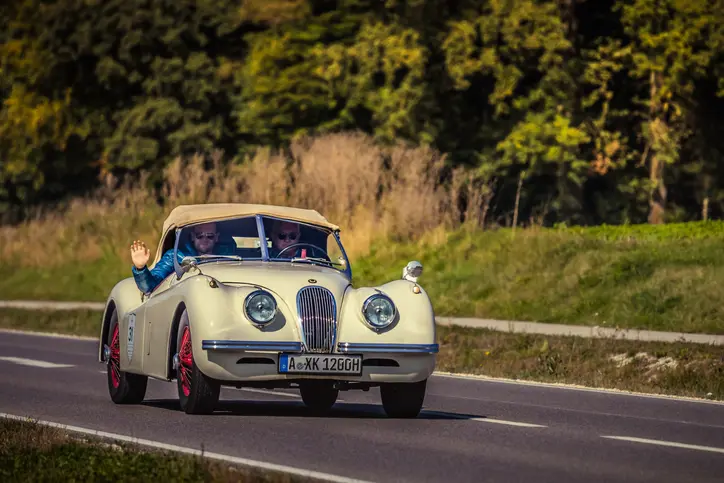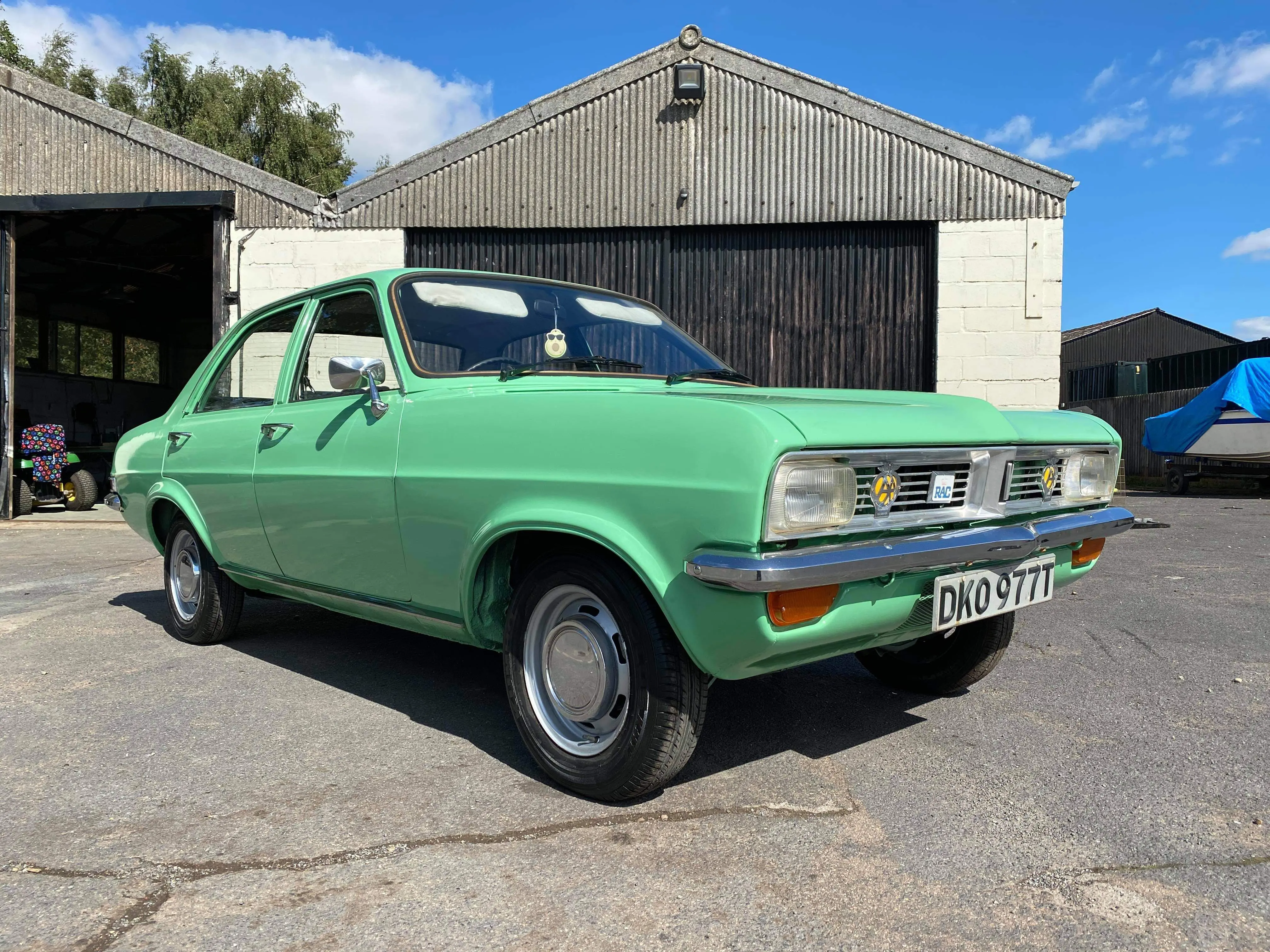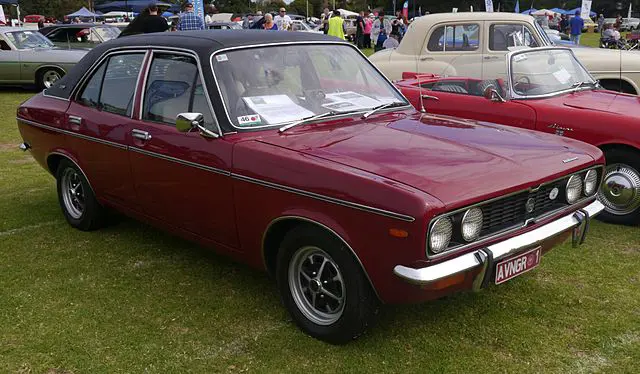How to preserve the value of your classic car
25 October 2021
When it comes to maintenance, classic cars provide a very different set of challenges to newer models. The age and condition of their various components means that classics will need a little more care and attention if they are to retain that vintage sparkle that you love them for.
On the other hand, you'll probably love your vintage motor in ways you never quite managed with more recent models – and all that maintenance, cleaning and general nurturing is just part and parcel of ownership.
Here are a few tips on keeping your classic in tip-top condition. If you can combine these good habits with a classic motor insurance policy that helps protect your investment throughout your time with it, we think you're in for a happy ownership journey – as well as a decent price, if and when you decide to pass your classic onto a fellow enthusiast.

Keep autumn and winter driving to a minimum
You may want to keep your classic off the roads, and stored somewhere safe and dry, throughout the autumn and winter months. For one thing, the kind of cold, wet conditions we Brits typically get from October through to April will do a classic car no favours at all. It’s well known that classics are more prone to rust, while older interiors may attract damp.
Another risk you'll run during the coldest months is encountering salt on the roads, laid down to prevent ice from forming. Car metalwork doesn't like salt: it can cause abrasions and scratches and can also increase the risk and rate of corrosion.
If you do take your car out for a spin on salted roads, be sure to give it a good hose down or bucket wash when you get home again, paying particular attention to the wheel arches, undercarriage and other parts that will have been nearest the road.
Keep the car in a garage
Space permitting, you should store the car in a garage when it's not in use. Storing a classic indoors will protect it from the worst of the weather – cold, bright sunshine, snowstorms, and hail, for example. Not only that: indoor storage will also protect the car from branches and other debris falling from trees, or even from a loose roof tile flying off in a storm.
But what building material is best for your garage? The answer is: brick – because bricks are made to 'breathe', meaning that they are permeable to moisture and water vapour, and thus can dry out more effectively than a stone wall.
Keeping your car within a brick-built structure will avoid the kind of condensation that could leak onto your classic's bodywork or fuel tank. Bricks also maintain a constant temperature, which your classic will prefer to fluctuating extremes of hot and cold.
If you don't have or can't build a brick garage, a wood or concrete structure will keep off the worst of the British weather. However, concrete won’t breathe as well as brick, so consider running a fan in the garage every week or two to keep the air circulating and to ward off any mould and mildew.
A barn or outbuilding will do a decent job too, but in this case, you should keep a cover over the car to keep out animals and damp (more on covers in a minute). Even a pop-up structure such as a gazebo will provide some shelter.

Indoor storage: extra tips
While the car is stored indoors, it's a good idea to leave the windows slightly open to allow for some air circulation. This will help chase away any damp and prevent any unpleasant odours when you next get behind the wheel.
Keep a close eye on the temperature inside your garage. It may get cold in winter and hot in summer – in which case, you should consider heating, air conditioning, leaving windows slightly open in summer and so on. If the garage does seem damp, a dehumidifier may be a good idea.
Also ensure that the security in your garage is strong enough to protect your classic. You've probably lavished hours of your time and hundreds of pounds on the restoration and maintenance of the car; you don’t want all that good work undone by trying to save a few pounds on a second-rate padlock. Some specialist classic car insurance is another good way to protect your investment.
Storing your classic outdoors
Of course, an actual storage structure may simply not be an option – you may not have the right building, or even the space. The good news here is that storing a classic outdoors can work well – we'd just urge you to get a purpose-built cover to protect your vehicle from the wind and rain.
You'll need this to be made specifically for your car, rather than a generic car cover, as you want a tight fit that will prevent the rain from creeping in, and the wind from rubbing the cover against the car and damaging the paint job.
If you're storing the car outdoors it's also a great idea (if possible) to keep the car raised off the ground – this will protect the underside, wheels, and tyres from the worst of the weather.
Material is also crucial here: a standard tarpaulin is not a good idea on a classic car, as it won't let the car breathe, and you'll end up with condensation, mould, and mildew. Make sure you buy from a company that makes breathable covers.
Preparing the car for winter storage
Before you stow the vehicle away for winter, it's a very good idea to give it a thorough clean, polish and wax. This will help to make sure it's free from dirt, salt, and moisture which, in turn, will go a long way towards protecting it from corrosion. After going through these stages, make sure the car is completely dry before it goes into storage.
We also recommend leaving some windows open to keep the air circulating. Of course, this can make the car a target for mice and other small creatures, so make sure there's nothing inside the car – such as food crumbs or dirt – that might tempt them in.
If your car is a convertible, the best way to store it is with the soft top up: this will help the latter to keep its shape, stopping the material from warping or shrinking.
Also, make sure your car is not in direct sunlight, which will cause the paint job to fade. This is particularly an issue on older car paints such as the ones used on most classic vehicles. Again, a breathable cover is the way forward here.
It’s also a good idea to fill the fuel tank before a long period out of action. A full fuel tank is an effective safeguard against condensation.
Checks to make during winter storage
You might think that most of the work done on a car will be during the months when it's being driven – but that's not entirely true. There's plenty you can do during those winter, laid-up months to ensure your classic remains in good health.
For one thing, you should keep a close eye on fluid levels. Starting the engine when the car is low on fluid can be bad news for a classic car – so make sure you keep an eye on levels of oil, coolant, transmission fluid and brake fluid throughout the car's idle time.
Elsewhere, make regular checks for any rust spots, and treat them with a good-quality lubricant. Small rust spots may be a part of life with most classic cars but allow them to grow and worsen and you could have problems on your hands – not to mention drastically reducing the value of your car when it comes to selling it on.
Fire it up every couple of weeks and let the engine reach a normal running temperature for 15 minutes or so. Or, weather permitting, take it out for a few miles to help prevent problems such as sticking clutch and brakes, or failing hydraulics. This also protects the tyres from deforming, which they might if they are left sitting in the same spot for too long.
Extra tips
Don’t smoke in your classic
Cigarette fumes can lodge themselves in the fabric and upholstery and can be very hard to shift – making the car less pleasant for you to step into, and much less enticing for a future buyer.
Keep the mileage down
We're sure you love your classic car and dream of covering some serious distances in it. However, while the odd road trip or tour is a central part of the joy of owning a classic, we'd recommend not working the car too hard.
Your vehicle's mileage will have a significant effect on the price you'll get for it when you come to sell it on. That's partly why most classic car owners will keep their classic for weekend or hobby motoring, rather than as a daily driver.
Get your car waxed
A huge part of a car's perceived value comes down to how it looks. Collectors will be on the lookout for a classic or historic car sporting original bodywork and paintwork – and, to keep these looking at their sharpest and best, it's a good idea to get your classic waxed several times a year. Waxing helps to protect bodywork, and also maintains the colour for longer – and the quality of the paint job will be one of the first things a collector hones in on.
Ask an expert to check over the vehicle
Of course, if you're taking your car out on the roads, it will be getting regular checks at service and MOT time. If your car is exempt from MOT, meanwhile, it's still important to get someone to check the steering, brakes, suspension, and tyres as these can all deteriorate – even when the car is not in use.
Keeping all your paperwork up to date and keeping any old receipts or service information safe and sound will also help you get the best price if and when you come to sell it on.

Don’t add any individual touches
You might be feeling tempted to customise your classic in some way – but, in the long run, your wallet won't thank you. Collectors will be much more interested in a car that's either been maintained in its original state, or which they can easily restore to that state. It's not advisable to add any major changes that a future owner can't undo.
We're not, however, talking about adding certain modern fixtures such as newer brakes, steering or suspension – these are generally considered an acceptable part of classic car maintenance.
And if you do decide to make any additions, be sure to tell your classic car insurance provider about them as they could affect your cover.
Join an owners' club
Part of the joy of owning a classic is making friends with all the other enthusiasts out there. If you’re a first-time owner, you may be able to get some invaluable hints and tips from them too, which may stop you making a mistake during restoration - and therefore help you preserve the value of your classic for the future.
What's more, membership of an owners' club can often get you a discount on your insurance for your classic car. Make no mistake, these clubs add value to your investment whichever way you look at them.
Invest in some classic car insurance
A specialist classic car insurance policy can go a long way towards helping you fund any repairs and restoration work you do have to carry out – and, in turn, towards keeping your classic in its best possible state for future collectors.
Benefits of insuring your classic car with Lancaster can include:
- Car Club member discounts up to 25%
- Laid-up cover
- Two year agreed valuation
- Choice of repairer
- Salvage retention
- Limit mileage discounts
Contact us today to find out more about the benefits of classic car insurance.
